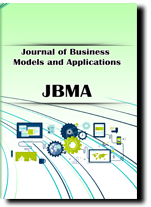[1] Ang CS, Sakel, M, Pepper, M, Philips, M. (2011) Uses of brain computer interfaces in neurological rehabilitation: a review. British Journal of Neuroscience Nursing, 7(3), pp 523 – 528
[2] Bianchi L, Quitadamo L, Garreffa G, Cardarilli G, Marciani M (2007) Performance Evaluation and Optimization of Brain-Computer Interface Systems in a Copy Spelling Task. IEEE Trans Neural Systems and Rehabilitation Eng June: 207-216
[3] Birbaumer N and Cohen LG (2007) Brain-computer interfaces: communication and restoration of movement in paralysis. J Physiol 579(3): 621-636
[4] Birbaumer N, Ghanayim N, Hinterberger T, Iversen I, Kotchoubey B, Kübler A, Perelmouter J, Taub E, and Flor H (1999) A spelling device for the paralyzed. Nature 398: 297–298
[5] Chayer C and Freedman M (2001) Frontal lobe functions. Current Neurology and Neuroscience Reports I (6): 547-552
[6] Chentsova-Dutton, Y., & Tsai, J.L. (2007). Gender differences in emotional responding among European Americans and Hmong Americans. Cognition and Emotion, 21, 162-181.
[7] Flor H, Kubler A and Birbaumer N (2006) Neuronal internet: web surfing with brain potentials. Neurorehabil Neural Repair 20: 498–50
[8] Hammond D (2005) Neurofeedback Treatment of Depression and Anxiety. Journal of Adult Development 12 (2/3): 131-137
[9] Hammond DC (2001) Neurofeedback treatment of depression with the Roshi. Journal of Neurotherapy 4(2): 45-56
[10] Jarusiuwicz B (2002) Efficacy of neurofeedback for children in the autistic spectrum: A pilot study. Journal of Neurotherapy 6(4): 39-49
[11] Kamiya J (1969) Operant control of the EEG alpha rhythm. In C. Tart Eds, Altered states of consciousness. NY: Wiley.
[12] Karim A, Hinterberger T, Richter J, Melinger J, Neumann N, Flor H, Kubler A and Birbaumer N (2006) Neuronal internet: web surfing with brain potentials. Neurorehabil Neural Repair 20: 498–503
[13] Kennedy PR, Bakay RA, Moore MM, Adams K and Goldwaithe J (2000) Direct control of a computer from the human central nervous system. IEEE Trans Rehabil Eng 8: 198–202
[14] Kostov A and Polak M (2000) Parallel man-machine training in development of EEG-based cursor control. IEEE Trans Rehabil Eng 8: 203–05
[15] Kring AM, Gordon AH. Sex differences in emotion: expression, experience and physiology. J Pers Soc Psychol. 1998;74:686–703.
[16] Kübler A, Kotchoubey B, Hinterberger T, Ghanayim N, Perelmouter J, et al. (1999) The thought translation device: a neurophysiological approach to communication in total motor paralysis. Exp Brain Res 124: 223–232
[17] Lang, P. J. (1995). The emotion probe: Studies of motivation and attention. American Psychologist, 50, 372-385
[18] Lang, P.J., Bradley, M.M., & Cuthbert, B.N. (2008). International affective picture system (IAPS): Affective ratings of pictures and instruction manual. Technical Report A-8. University of Florida, Gainesville, FL.
[19] Bradley, M. M., & Lang, P. J. (1999). International affective digitized sounds (IADS): Stimuli, instruction manual and affective ratings (Tech. Rep. No. B-2). Gainesville, FL: The Center for Research in Psychophysiology, University of Florida.
[20] McFarland DJ, Sarnacki WA, Wolpaw JR (2008) Electroencephalographic (EEG) control of three-dimensional movement. Society for Neuroscience, Washington, DC, USA.
[21] Monastra VJ, Lynn S, Linden M, Lubar JF, Gruzelier J, LaVaque TJ (2005) Electroencephalographic biofeedback in the treatment of attention- deficit/hyperactivity disorder. Appl Psychophysiol Biofeedback 30: 95–114.
[22] Monderer RS, Harrison DM and Haut SR (2002) Neurofeedback and epilepsy. Epilepsy Behav 3: 214–18.
[23] Mugler E, Ruf C, Hadler S, Bensch M and Kubler A (2010) Design and Implementation of a P300-Based Brain-Computer Interface for Controlling an Internet Browser. Transaction on Neural Systems and Rehabilitation Engineering 8(6):599-609.
[24] Müller-Putz G and Pfurtscheller G (2008) Control of an Electrical Prosthesis with an SSVEP-Based BCI, IEEE Trans Biomedical Eng 55(1): 361-364.
[25] Müller-Putz GR, Scherer R, Pfurtscheller G and Rupp R. (2006) Brain-Computer Interfaces for Control of Neuroprostheses: From Synchronous to Asynchronous Mode of Operation, Biomedizinische Technik/Biomedical Eng 51(2): 57-63.
[26] Müller GR, Scherer R, Pfurtscheller G and Rupp R (2005) EEG-based neuroprosthesis control: a step towards clinical practice. Neurosci Lett 382(1-2):169-74.
[27] Neuper C, Müller-Putz GR, Kübler A, Birbaumer N and Pfurtscheller G (2003) Clinical application of an EEG-based brain-computer interface: a case study in a patient with severe motor impairment, Clinical Neurophysiology 114(3): 399-409.
[28] Peniston EG and Kulkosky PJ (1991) Apha-theta brainwave neuro-feedback therapy for Vietnam vertans with combat-related post-traumatic stress disorder. Medical Psychotheraphy 4: 47-60.
[29] Perez-Marcos D, Slater M and Sanchez-Vives MV (2009) Inducing a virtual hand ownership illusion through a brain-computer interface. NeuroReport 20(6): 589-594.
[30] Putnam JA (2001) EEG biofeedback on a female stroke patient with depression: A case study. Journal of Neurotherapy 5(3): 27-38.
[31] Sharma N, Pomeroy VM and Baron JC (2006) Motor Imagery: A Backdoor to the Motor System after Stroke? Stroke 37: 1941-1952.
[32] Sisner J and Kreutzer J (1989) A family information system for education following traumatic brain injury. Brain Injury 3(1): 79-90.
[33] Wolpaw JR and McFarland DJ (2004) Control of a two-dimensional movement signal by a noninvasive brain-computer interface in humans. Proc Natl Acad Sci USA 101: 17849–54.
[34] Wolpaw JR, McFarland DJ, Neat GW and Forneris CA (1991) An EEG-based brain-computer interface for cursor control. Electroencephalogr Clin Neurophysiol 78: 252–59.




